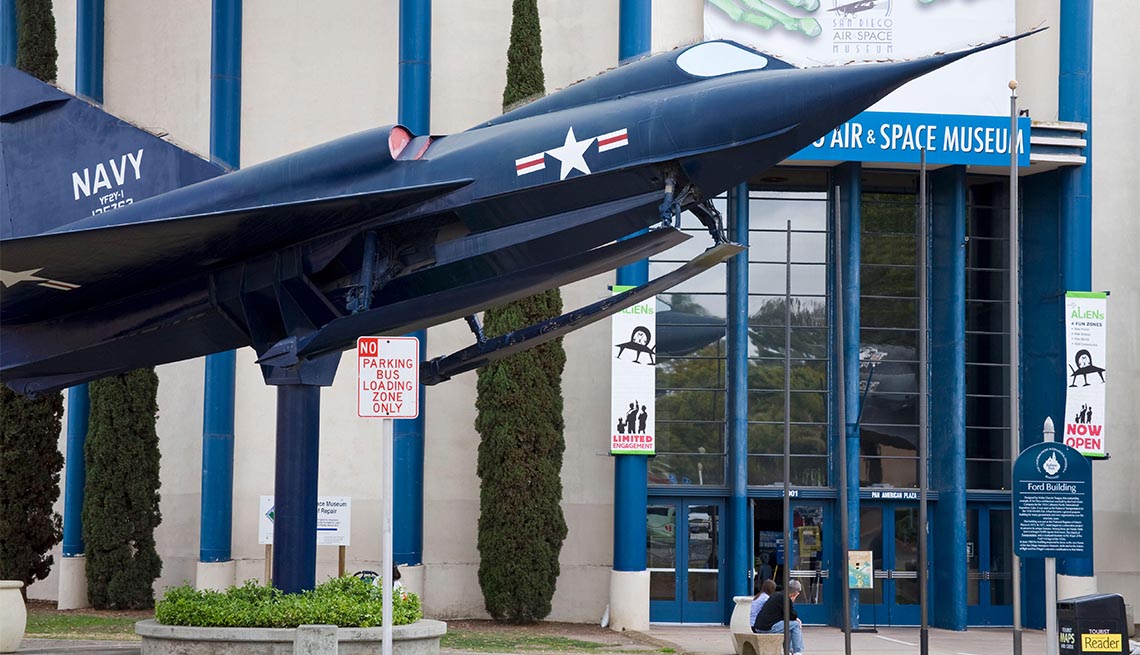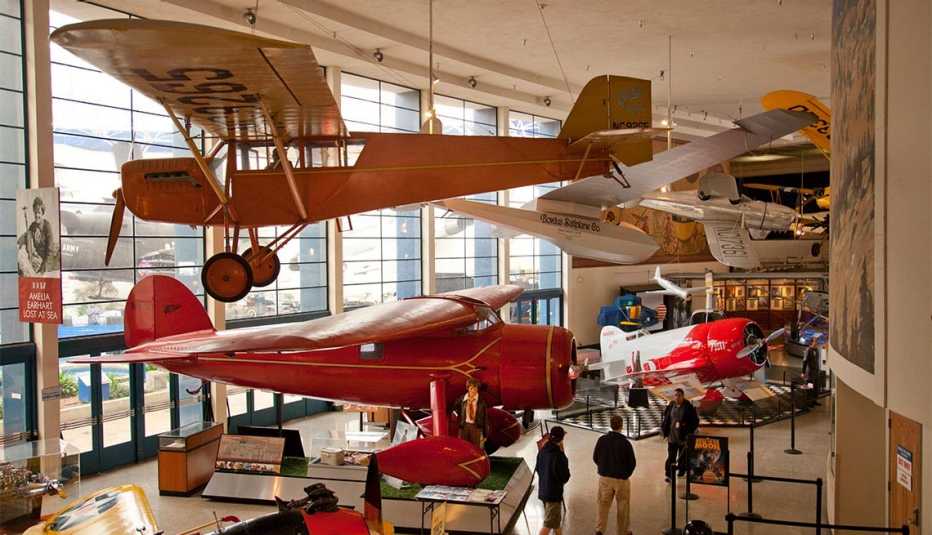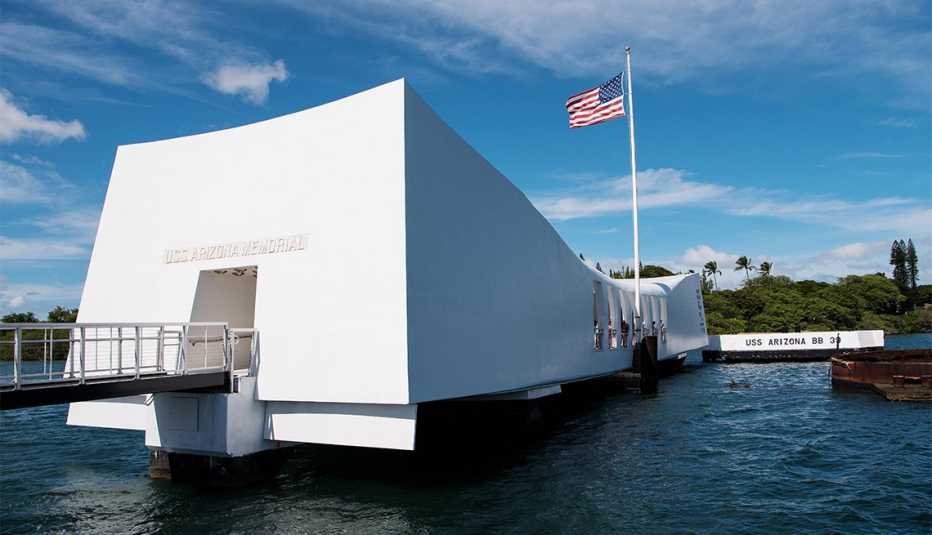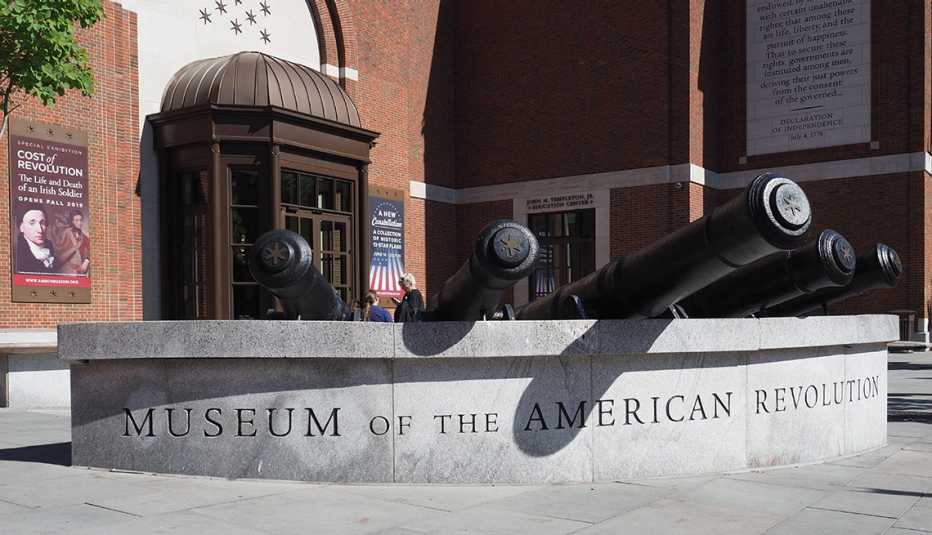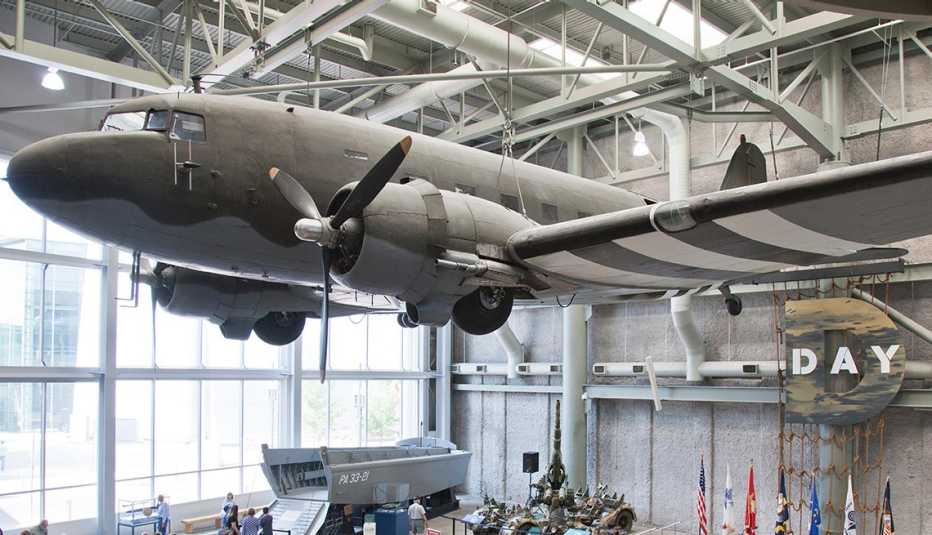Staying Fit
COVID-19 update: California is rolling out a slow and steady reopening plan that currently includes museums and other indoor activities. Its guidelines for mask wearing follow the CDC's, with loosened rules for fully vaccinated individuals, but face coverings are still required inside the museum for all visitors 3 and older. Social distancing (you're asked to stay at least 6 feet from other parties) is strongly encouraged. Visitors are also encouraged to buy tickets online in advance. Check the museum's website for its most recent guidelines.
The San Diego Air & Space Museum (SDASM), a Smithsonian Institution affiliate, is a nesting doll of history. The artifacts are housed within a landmark building that’s part of Balboa Park, an international architectural jewel that was turned into barracks, then turned back into a world-class 1,200-acre public space in the heart of the city.
You’ll find dozens of historically significant buildings in the park, which was the site of the 1915 Panama-California Exposition and became a makeshift military city during World Wars I and II for the Navy, Army and Marines. They transformed buildings still standing today into barracks, hospital extensions and training grounds — SDASM’s home among them.


AARP Membership— $12 for your first year when you sign up for Automatic Renewal
Get instant access to members-only products and hundreds of discounts, a free second membership, and a subscription to AARP the Magazine.
Constructed in 1935 by famed machinist Henry Ford, the Ford Building (where the SDASM resides) has fulfilled many lives: an industrial and automotive exposition hall, military storage facility for antiaircraft guns shipped off to Hawaii in the 1940s, a technical school for the 251st Coast Artillery, a training site for men and women aircraft workers during World War II — and based on how the underground beams are marked, a suspected bomb shelter.
Entering the museum
The art deco structure is flanked by one of only three of the Navy's experimental Convair YF2Y-1 Sea Darts ever flown and a retired CIA Lockheed A-12, foreshadowing the wealth of military history inside. Just beyond the doors, a rotunda introduces you to the beginnings of flight and its trailblazers, including American aviator Charles Lindbergh (for whom the city's international airport is named) and physicist and glider hobbyist turned aviation pioneer John J. Montgomery, whose early experiments and investigations informed the Wright Brothers’ patent.
Flight's early years
You'll learn that for all their contributions and fame, the Wright Brothers stymied innovation, and in effect, wartime efforts. While European nations were producing sophisticated aircraft by the dawn of World War I, the U.S. — limited by the brothers’ 1906-filed patent — had nothing remotely war-worthy to offer the sky.
As a result, America's first airborne service craft wasn't American made at all: Suspended from the ceiling as you enter the area for World War I-era of flight, an original 1918 red-nosed Nieuport 28C-1 (N.28) lightweight biplane fighter showcases French craftsmanship and simplicity. Made of canvas, wood and cables, the N.28 was essentially a motorized kite, but with impeccable maneuverability. And so the American Expeditionary Force bought 297 of them in March 1918. By April, the 94th “Hat in the Ring” Aero Squadron had shot down two German planes with the N.28's single synchronized Vickers 7.7 mm machine gun — the first enemy aircraft to be bested by American airmen.
It's an invigorating story, one that speaks to the inherent truths of resilience among those in the service and that begins the evolution of higher altitude warfare that unfolds across the eight fighter planes in the expansive gallery, each its own star in the collective World War I sky where history was written.
You'll see an Albatros D.Va replica, the plane made famous by the Red Baron and the 40 hard-earned kills he won in its cockpit; the Fokker E.III Eindecker reproduction, equipped with a machine gun that could time its shooting around the propeller, freeing both the pilot's hands for navigation; and the V-8 engine SPAD VII, favored over the Nieuport by the French and known to be one of the hero fighters of World War I.



























































